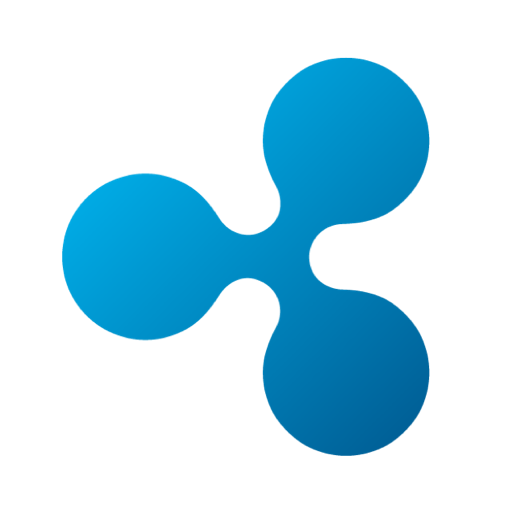
This is the first post of three in a series on Ripple’s vision and product strategy.
Though it didn’t happen overnight, we’re living in a new world; blockchain and digital assets went from niche to mainstream in 2017.
Since 2014, Ripple has been focused on building products that solve the gross inefficiencies in cross-border payments. Those products are based on the technology and principles of the XRP Ledger and are built for those responsible for the world’s financial infrastructure — financial institutions.
We’ve focused our communications efforts on that target customer audience with the intended and happy by-product of other interested audiences consuming the Ripple story.
But for years, while we dedicated communication to our institutional customer base, interest and excitement in the promise and potential of blockchain and digital assets exploded. Retail speculation in digital assets took off.
As we saw this phenomenon take place, we came to recognize and embrace the important role that speculative liquidity plays in building payments liquidity. Put simply: Liquidity begets liquidity!
We’ve fielded a lot of questions as of late about our strategy (and how the speculative markets fit into it), and traction (and how real it is). We want to clearly communicate who we are, what we’re doing and how we’re doing it, not just to our institutional customers but all Ripple stakeholders and the XRP ecosystem.
What follows isn’t any different from what we’ve said in the past. Our hope is that this comprehensive, unfiltered view of our strategy and traction will enlighten the conversations currently taking place about Ripple and XRP.
A Vision of Value
Chris Larsen, our co-founder and executive chairman, started talking about his vision for an Internet of Value in 2013 — before anyone had heard of such a thing.
His vision was and remains pretty mind blowing: enable the world to move value like information moves today.
Today, we can stream video from a space station using the internet but we can’t easily move and exchange different forms of value (dollars, euros, bitcoins, loyalty points, gold) around the world because the financial infrastructure uses the equivalent of analog technology.
The Internet of Value is about modernizing financial infrastructure using blockchain technologies and digital assets so that sending money from point A to point B is as fast, easy, transparent, reliable and inexpensive as it is to send a communication from point A to point B.
Frankly, “modernization” undersells the transformative potential of the Internet of Value. The internet as an innovation catalyzed a total revolution in the way the world works. By lowering the barriers to access information, the internet has connected people around the world and spawned new categories and businesses like Google, Amazon, Facebook, Alibaba. We see similar promise with the Internet of Value.
Chris articulated a vision sparked by a trio of developers. It’s important to know that the XRP Ledger has always been and will always be an open-source project that exists independently of Ripple, the company. The trio’s goal in developing the XRP Ledger at the time was to build a better Bitcoin — a faster, more scalable, stable, energy-conscious version. As early Bitcoin developers, they saw miners, not developers, reap the rewards of proof-of-work.
So after creating the Ledger and XRP, they decided to gift the majority of XRP to a private company who could use it to recruit full-time developers and business professionals to build an ecosystem around the technology and drive usage. Ripple did not create XRP. Ripple is a steward of XRP and the most interested party in its success.
Where to Start
Chris’ pitch on the Internet of Value is incredibly inspiring. It’s attracted the 200 of us who work at Ripple to leap at the opportunity to join the company and to give Ripple our all day-in and day-out.
But no one company can build the Internet of Value, just as no one company built the internet! (Not even Al Gore.) We decided early on that Ripple’s insertion point in enabling the Internet of Value would be in removing friction from cross-border payments.
It’s an audacious mission. According to McKinsey’s Global Payments report, today the world sends more than $150 trillion across borders. That figure climbs year to year as global commerce grows. And if we harken back to the internet analogy, the internet made information exchange across networks so efficient that the volume of information exchanged skyrocketed. We believe that when we’re successful at making global payments infrastructure hyper-efficient, the volume of cross-border and cross-network transactions will skyrocket. Point being, cross-border payments is a very large and expanding space.
If you’ve ever sent money internationally, you were probably underwhelmed or even very frustrated with your experience. It was probably expensive, slow and a mystery as to when your payment would be delivered. Maybe your institution even lost the payment — that happens surprisingly often. In a day and age where we can order food, rides, movies, groceries with a finger tap and then track order fulfillment and delivery minute-to-minute, global payments fall woefully short of our expectations.
Global payments run on an entrenched, antiquated system in which financial institutions relay payments from one to another, country to country. Like a relay in a foot race, each hand off of the payment from one institution to the next creates risk of delay, failure, miscommunication and cost. It’s why institutions regularly “drop the baton.”
The largest banks in the world sit in the middle of the relay and provide foreign exchange services. Because few banks are big enough to hold liquidity in many currencies in accounts around the world, payments liquidity isn’t very competitive. As a result, smaller financial institutions — banks and payment providers — wind up paying these big banks a premium for their services.
We can do better.
Continue reading, “Much Ado, Much to Do – Part 2”
!By: Team Ripple
Source:
https://ripple.com/insights/much-ado-much-to-do-part-1/